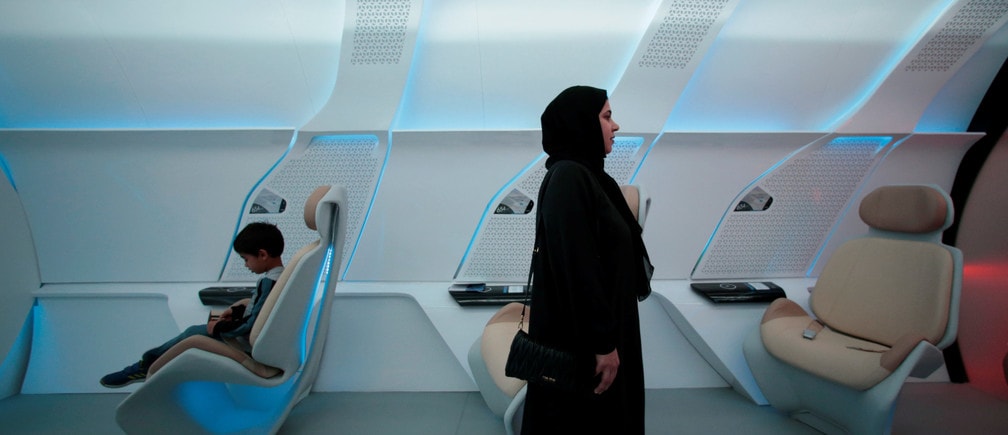This is what the cities of the future could look like

Could hyperloops be the future of inner-city travel? Image: REUTERS/Christopher Pike

Get involved with our crowdsourced digital platform to deliver impact at scale
Stay up to date:
Energy Transition

The anatomy of a smart city
There is no doubt that the city will be the defining feature of human geography for the 21st century.
Globally, there are 1.3 million people moving to cities each week – and by 2040, a staggering 65% of the world’s population will live in cities.
At the same time, the 600 biggest urban areas already account for 60% of global GDP, and this will only rise higher as cities become larger and more prosperous. In fact, experts estimate that up to 80% of future economic growth in developing regions will occur in cities alone.
The smart city: A necessary step
As cities become an even more important driver of the global economy and wealth, it’s becoming crucial to ensure that they are optimized to maximize efficiency and sustainability, while enhancing the quality of life in each urban conglomeration.
Today’s infographic from Postscapes helps define the need for smart cities, and it also gives great examples of how technology can be applied in urban settings to facilitate cities that work better for their citizens.
Features of tomorrow's cities
Smart cities will use low power sensors, wireless networks, and mobile-based applications to measure and optimize everything within cities.
Here are just some examples:

Smart city solutions will fall into six broad categories, transforming the urban landscape:
1. Infrastructure
Smart lighting is one of the most important solutions that will be implemented in citywide infrastructure. While smart lighting sounds trivial at first glance, it’s worth noting that lighting alone consumes a whopping 19% of the world’s total electricity.
2. Buildings
Heating, energy usage, lighting, and ventilation will be managed and optimized by technology. Solar panels will be integrated into building design, replacing traditional materials. Fire detection and extinguishing is tailored to individual rooms.
3. Utilities
Smart grids (used for energy consumption monitoring and management), water leakage detection, and water potability monitoring are just some smart city aspects on the utilities side.
4. Transport
Intelligent, adaptive fast lanes and slow lanes (cycling, walking) will be implemented, while charging stations through the city will power EVs.
5. Environment
Air pollution control, renewable energy, and waste management solutions will make for greener cities. Rooftop gardens or side vegetation will be integrated into building designs, to help with insulation, provide oxygen, and absorb CO2.
6. Life
There will be citywide Wi-Fi for public use, while real-time updates will provide citizens information on traffic congestion, parking spaces, and other city amenities.
The effect?
Cisco estimates that smarter cities will have impressive increases in efficiency: using many of the above concepts, cities can improve energy efficiency by 30% in 20 years.
Simultaneously, it’s estimated that the broad market for smart cities products and services will be worth $2.57 trillion by 2025, growing at a clip of 18.4% per year on average.
Don't miss any update on this topic
Create a free account and access your personalized content collection with our latest publications and analyses.
License and Republishing
World Economic Forum articles may be republished in accordance with the Creative Commons Attribution-NonCommercial-NoDerivatives 4.0 International Public License, and in accordance with our Terms of Use.
The views expressed in this article are those of the author alone and not the World Economic Forum.
Related topics:
The Agenda Weekly
A weekly update of the most important issues driving the global agenda
You can unsubscribe at any time using the link in our emails. For more details, review our privacy policy.
More on Urban TransformationSee all
Lisa Chamberlain
April 25, 2024
Victoria Masterson
April 17, 2024
Fatemeh Aminpour, Ilan Katz and Jennifer Skattebol
April 15, 2024
Victoria Masterson
April 12, 2024







